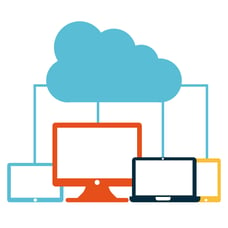Should EHR Software Integrate With Your Practice Management System?
For many healthcare providers, the recent push to switch to electronic health
records has left them with technological overlap. Before Meaningful Use
incentivized EHR  adoption in 2009, many practices already used practice management software to better manage patient check-ins and billing.
adoption in 2009, many practices already used practice management software to better manage patient check-ins and billing.
However, now that digitizing patient records is required, Optometrists face a difficult choice: Should you choose an EHR software that integrates with your current practice management system, or just get a separate EHR and leave your practice management to function on its own?
Integration between practice management and EHR software is becoming a common option for EHR buyers, especially those considering cloud-based services. But which option makes more sense: integration or standalone? Zach Watson, content manager at TechnologyAdvice, gave us some insights on when it's best to stick with a standalone, or if it's time to explore integrated solutions. Let's examine the case for each.
Standalone vs. Integrated Practice Management and EHR Software
When to Stick with Standalone
Certain practice management products perform a wide range of reporting, workflow, and billing functions. Even in standalone form these products allow you to basically run your practice from within one program - that is until EHRs become the new normal, which is very soon.
But while EHR adoption is on the rise, not everyone will adopt one. Some providers may choose to retire or simply stop seeing Medicare patients. If you don't plan on ever adopt an EHR, then carrying your current standalone practice management platform makes sense. It has served you well in the past, and will probably continue to do so in the future.
Starting a new practice with very limited cash flow may serve as another reason for going with a standalone practice management product. While EHRs can help improve clinical documentation, they typically have a longer ROI timeline than practice management software, even if you qualify for Meaningful Use incentives.
 When to Choose Integrated
When to Choose Integrated
If you're not on a shoestring budget, or against EHRs on principle, then choosing an integrated EHR and practice management solution will simplify your clinical workflow. By structuring both systems to run off of a common database, you're reducing the number of opportunities for human error and lost or inaccurate data.
Integration also helps increase efficiency between your clinical and billing departments by automating scheduling calendars and increasing the power of the reports your software can generate. More powerful reporting helps you better identify the procedures and payers that generate the most revenue, which can influence how you run your practice.
This saves you money by reducing the resources you have to spend on maintaining two separate software programs. Trying to build an interface between different products can be costly, and updates to one product can actually break the interface that you have to pay the software company to build.
The catch for specialists has always been finding a specialty specific system that offers an integrated practice management option. Many systems targeted toward primary care physicians offer integrated products, but these solutions may not be ideal for optometry workflows.
Uprise by VisionWeb is an EHR solution that's targeted towards optometrists that also offers integrated practice management. If you're considering sticking with your standalone practice management solution, you might want to reconsider. While switching to an integrated product may be difficult at first (although many cloud-systems score high marks for implementation), the end result will simplify your operations and benefit your practice.
Take a look inside Uprise by watching our Doctor to Doctor demo video.

